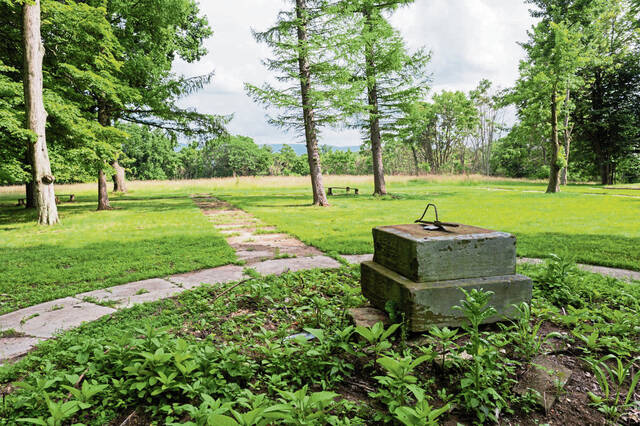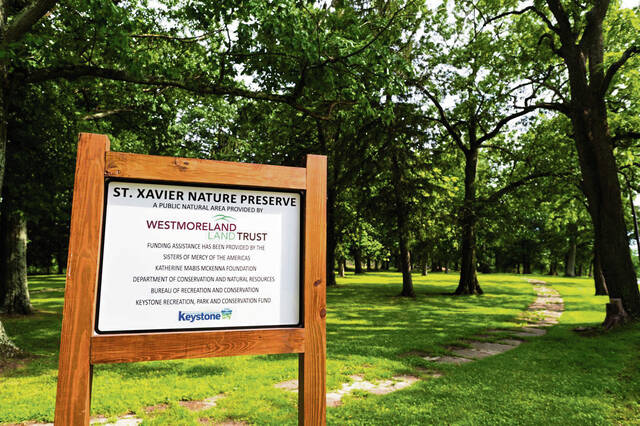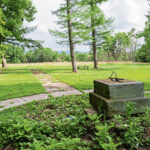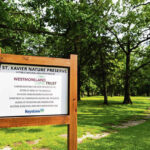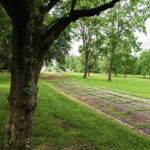The Westmoreland Land Trust is expanding a preservation project at its St. Xavier site by planting native grasses and wildflowers.
Along Route 30 in Unity, the St. Xavier Nature Preserve is part of an ongoing collaboration with Saint Vincent College, which donated cameras and other infrastructure to create livestreams of three bird nest boxes.
The space contains almost 248 acres. It was purchased by the trust for about $1 million with funds provided by the state Department of Conservation and Natural Resources Conservation Fund Act.
Last October, more than 2,300 trees were planted in the first project designed to preserve the property.
John Lohr, board member and former board chair, said that the trees have been doing very well.
“We purposely planted the trees in the dormant season, and they have been taking very well and did well over winter,” Lohr said. “We’re working on preserving about 80 of the 250 acres of the property right now.”
The St. Xavier Nature Preserve at Route 30 and St. Xavier’s Road — across from the Wimmerton housing development — is denoted by a blue state historical marker. The former St. Xavier Academy was the oldest institution of the Sisters of Mercy, a religious group of women who came to America from Ireland in 1843 aiming to serve the sick and needy. That’s the group that the Westmoreland Land Trust bought the nature preserve from.
St. Xavier opened in 1845 as Mt. St. Vincent’s Young Ladies Academy near today’s Saint Vincent College. The two-story, 12-room brick house was made available by the Rev. Michael Gallagher and graduated its first class of 16 students in August 1846.
The first main academy building, a three-story brick structure, welcomed students in 1847 but was destroyed by a fire in 1868. A new school stood in its place two years later and grew in the following decades. In 1928, a hall for boarding boys in grades 1-8 was created.
The academy and convent were demolished after another fire on March 16, 1972.
There is one building left on the property, which is called Bellbrook.
The trust bought the St. Xavier property to help the Sisters of Mercy with their plans for the site.
“The St. Xavier site has years upon years of harsh farming damage, causing the soil to deteriorate, killing vegetation, making wet, swampy areas in some spots,” Lohr said. “The Sisters were actually the ones who stopped the farming about five years ago and made plans to restore the property back to its original state; we’re just fulfilling their mission.”
Lohr said that the planting for the native grasses and wildflowers will be done twice to ensure “strong planting.”
“The seeds that we’re working with … it’s like planting sand,” Lohr said. “These plants are slow growing. But the great thing is that they are deep rooted and sustain over time — not as fragile like farming grasses.”
The native grass and wildflower planting is part of a partnership between the trust and the Conservation Reserve Enhancement Program, which pays farmers to retire and restore land that erodes easily or floods often. The trust is also working with Friendship Farms, a local Latrobe farm, on this project.
Betsy Aiken, executive director of the trust, said that modifications are made to the actual seed mix and drill used to help with plant growth.
“Friendship Farms makes use of a specialized seed drill for the mix that is effective for handling the very small wildflower seeds, and oats are also added to the mix to help with movement of the seed through the equipment,” Aiken said. “Grasses include big bluestem, Indiangrass, little bluestem, riverbank wildrye, Virginia wildrye and deertongue. The wildflower seed is Ernst’s ‘Showy Northeast Native Wildflower Mix.’ ”
Joe Costello, owner and planter for Friendship Farms, said that this conservation project is special to him.
“My brother and I went to the school (St. Xavier) before it burned down, so it’s pretty special to be working on,” Costello said. “It also is an exciting project because it will be adding more green space to the area and bringing people back to mature.
“It could have easily been developed and taken away.”
Costello said that the wildflower and native grasses planting is expected to take about one more week depending on the weather. The planting started last week.


